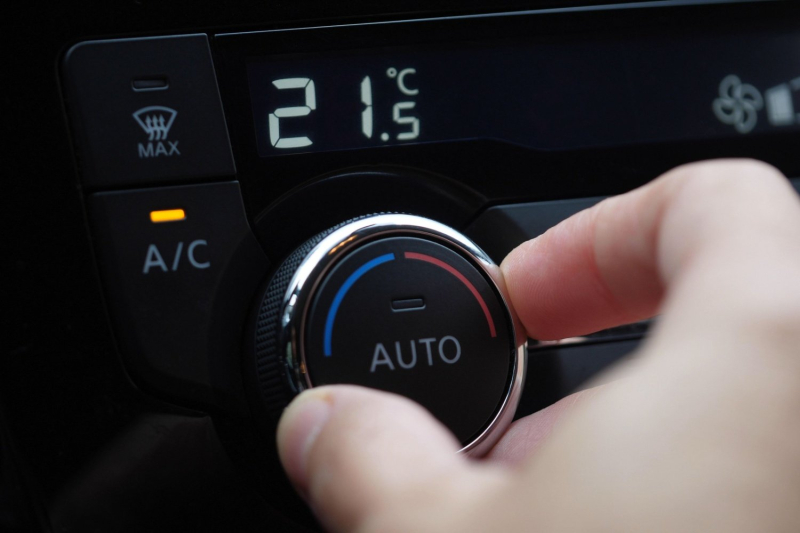
© Shutterstock
On motorway service areas, it has become a ritual. Drivers scan their dashboards, trying to find out the outside temperature. Some even go so far as to adapt their driving based on this information. But is this confidence justified? ? A female driver interviewed by TF1 expresses doubts: “Sometimes I wonder if there is not the aspect of the wind or if the car is in the shade which makes there is a difference compared to reality.
How Your Vehicle's Thermometer Works ?
The mechanism is simple in appearance. Electronic sensors, often discreet, are installed at strategic locations in the vehicle. Depending on the origin of the vehicle, these sensors are positioned in different locations. On French cars, they are found under the right rear-view mirror of the car. On foreign models, they are rather placed at the level of the bumpers or grilles, at the front of the vehicle.
In theory, these Sensors, which have evolved over the years, are supposed to be reliable within two or three degrees. But the reality is sometimes very different.
It is not uncommon to notice significant differences between the displayed temperature and reality. Differences of up to twelve degrees have been observed.How can we explain such differences??
200% Deposit Bonus up to €3,000 180% First Deposit Bonus up to $20,000The main culprit is the ground temperature. When the sun is strong, the ground absorbs some of the heat. Vehicles with sensors placed in the grille or bumper therefore record higher temperatures than those with sensors on the rearview mirror, since the heat is much more intense on the ground. For example, during a heatwave, the thermometer can indicate temperatures of up to 45° or 50° in some countries while the air temperature is 30 or 35°.
These variations may seem trivial, but they have real consequences, particularly on consumption. In the summer, you might be tempted to turn up the air conditioning, which uses more energy than necessary.
More dangerous in winter
But it is in winter that the problem becomes really worrying. Indeed, it is possible that some vehicles display temperatures above zero when in reality they are below or equal to zero degrees. However, driving in freezing weather is completely different. “We can have a safety concern, loss of grip” explains automotive expert Eric Champarnaud to TF1.
What to do then? If you park your car in the sun, it is recommended to wait several minutes after starting before relying on your thermometer. This delay allows the temperature to stabilize and to obtain a more accurate measurement. Above all, the thermometer in your vehicle remains a useful tool, but it should not be considered infallible. A good dose of common sense and observation of your surroundings remains essential for safe driving and adapted to real-world conditions.
- Car thermometers can display erroneous temperatures, with deviations of up to 12°C.
- The heat of the ground and the location of the sensors greatly influence the measurements.
- In winter, an incorrect reading can lead to road safety risks.
📍 To not miss any Presse-citron news, follow us on Google News and WhatsApp.

